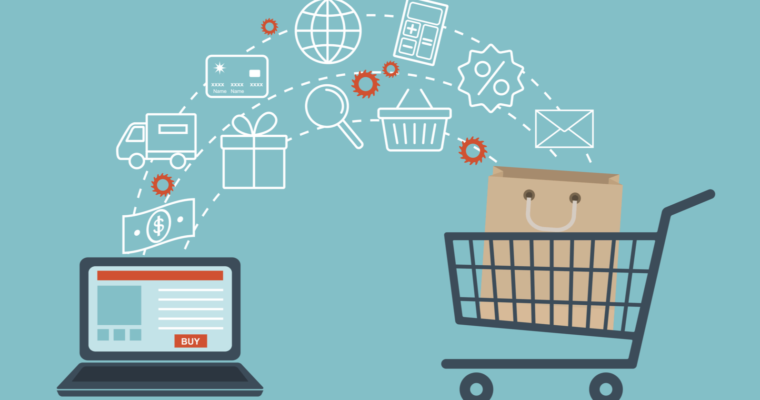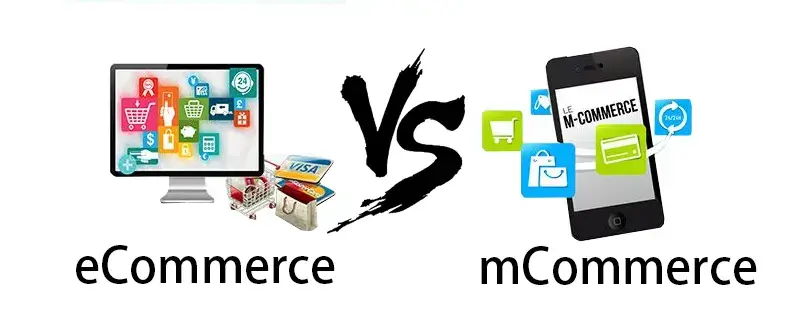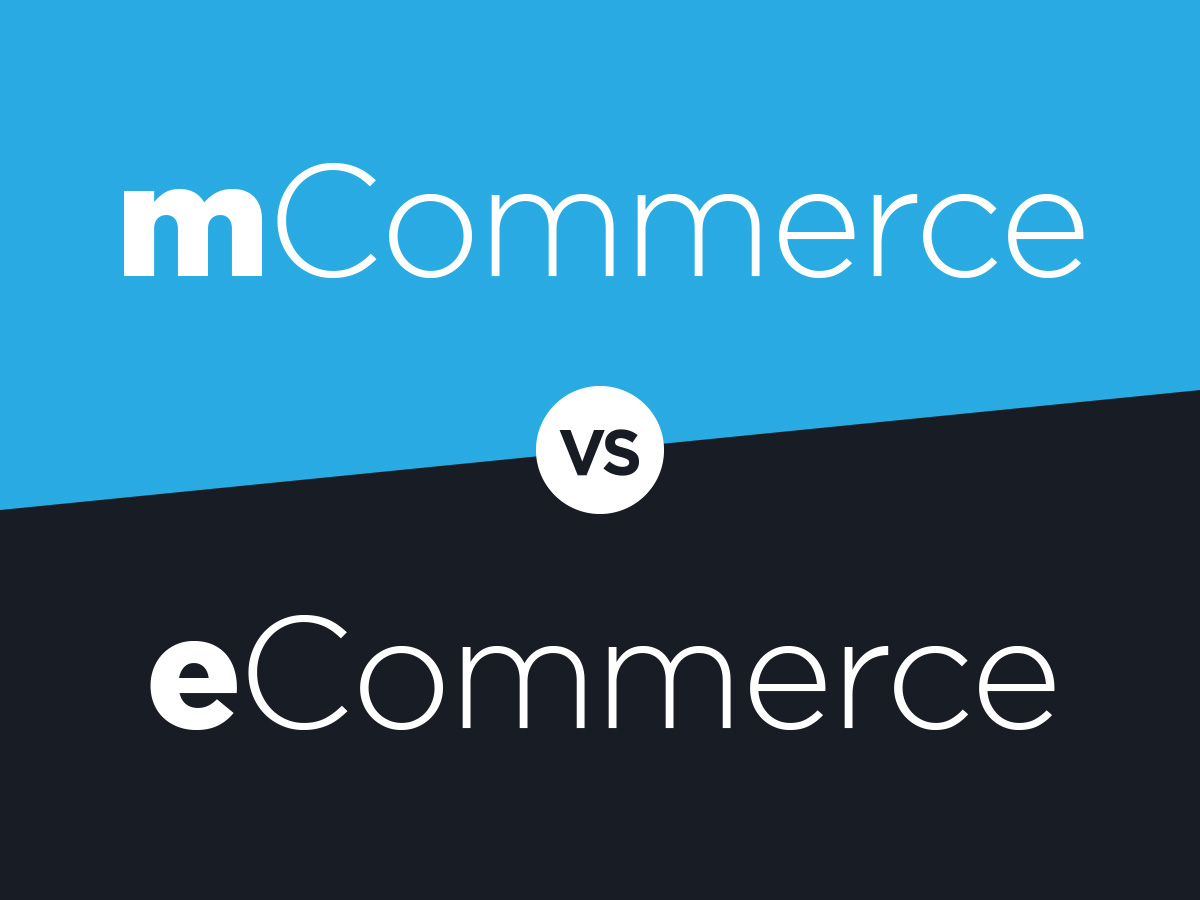Technology has influenced how people conduct business transactions. Nowadays, you are not obliged to stay in a queue for a considerable period when purchasing an item; however, this is not because the conventional ways of doing things have been done away with altogether! Instead, it simply means that almost all today rely on contemporary solutions such as M-commerce & E-commerce alongside traditional techniques like person-to-person interactions or mail orders (which were popular before). Ecommerce sites offer convenience and speed, which many find appealing, while mobile commerce allows consumers quick access at any point without having to leave home. With the internet bringing people together like never before, businesses of all types are trying to make themselves known on this new frontier. The increase in smartphones and high-speed mobile connectivity has created an entirely new way for consumers to shop. The changes in the digital retail scene are led by apps that allow you to do on-the-go shopping, or what’s called mCommerce today!
M-commerce & E-Commerce are two terms that often get confused.
M-commerce refers to mobile phone commerce, which is making transactions using a handheld device such as a smartphone or tablet. E-commerce is nothing but electronic commerce, which means buying and selling products or services online. M-commerce and E-Commerce both have their pros and cons, so it’s important to know how they differ before making any decisions on what type of business you want to start.
What is E-commerce?

Source E-commerce is the act of buying and selling online. The birth of e-commerce took place in 1994 with Philadelphia’s first purchase of a computer. However, there are many beliefs about when exactly this happened, including claims that it began as early as 1983 or 1986, depending upon who you ask! Generally speaking, though they’re all correct because regardless if one year was earlier than another two things still led up to today where people buy almost everything from their computers instead of just going out into store locations any more thanks largely due to advances technology which has made them so much more accessible anywhere 24/7 wherever can locate anyone. While names such as Amazon pop up when mentioning internet-based marketplace business models – let us not forget about all those digital products offered. E-commerce is a classification that includes both physical and digital products sold on the internet. The term has been around since before most people had access to their computers, meaning it’s older than many of us here! “In recent years, mobile users over online shopping for goods have increased at an alarming rate due in part from more users coming out with smartphones instead.”
What is M-commerce?

Source The increasing population that owns smartphones is driving the m-commerce trend. With mobile connectivity, security concerns, and apps development being fostered in this industry, there is no end to what retailers can offer their customer base through these means. This passage talks about how more people are using e-commerce transactions on a smartphone instead of just online shopping with desktop computers or laptops because they had become accustomed to it while also offering additional benefits over other forms such as easier payment options by having you sign up for supported sites automatically when prompted during the checkout process which reduces user input time compared side both paper slips used before technology was widespread enough where anyone could access them easily anywhere at any given moment. Online spending is on the rise and will only become more popular in the coming years. Online spending driven by m-commerce in the US has been on an upward trajectory for years and is expected to grow steadily, at least through 2022. In that time frame, there will be almost $600 million worth of mobile transactions annually! Retailers are taking notice–there are potential customers out there just waiting to buy their favorite products or services if only they could get them into our hands while we’re shopping away from home.
Key differences between M-commerce & E-commerce.

Source There are many ways for online businesses to stand out in their industry, but not all of them will work. M-commerce is different from e-commerce because it relies heavily on mobile devices and apps rather than desktop browsers or traditional web pages. This will help your company stay competitive in today’s ever-changing market, where technology is quickly evolving to meet consumer demands for convenience at every turn!
- Mobility
E-commerce is executed over computers and laptops with internet connections. Such technologies were once marveled at, but now we have mobile phones that can do the same thing! It may be tedious to flip open your laptop to order a pair of sneakers online; however, shoppers could easily whip up their phone app for M-commerce (mobile commerce) shopping, allowing them instant gratification while also getting all they need from brands in one place. A day without an app is like a car with no gas, and retailers know this. The difference between making purchases easily on the spot versus logging into your e-commerce website later can be huge when we talk about impulse buying; these people want what they see in front of them now or else! With a variety of mobile payment options such as Apple Pay and Google pay coming out recently – alongside many others who offer their services through smartphones too (PayPal) – customers have more options than ever before for instantaneous transactions at any point during that busy week.
- Push notification
Push notifications are time-saving and a great way to reach your customers with instant, on-the-spot updates that they will want. At the same time, email blasts can be annoying and disruptive in an already busy day-to-hand out promotional material when you’re trying to get through life as fast as possible. I prefer push because it’s less invasive than getting tons of emails every single minute from stores that don’t care about me or my time so much more often than not; those promotions go straight into our Spam folder without being opened by anyone, which makes them pretty ineffective anyway but what do we know? These days, push notifications can also include beautifully rendered images of the products, leading to users opening your m-commerce app with a single touch. With an average opt-in rate of 67.5%, the chances are high that you will be able to catch their attention when they receive these alerts on their devices!
- Location Tracking
The reason why e-commerce platforms are limited in scope is that they rely on IP addresses for tracking. The computer’s internet protocol (IP) number labels it as being in one location or another, but this doesn’t account for potential movement throughout a person’s day by taking different routes while getting emails checked and browsing websites at home before heading out. M-Commerce leverages various tracking technologies built into mobile phones such as GPS signals which can be used by retailers who want their customers informed about nearby promotions–the higher accuracy of positional data makes this possible! For instance, a retail outlet with an ongoing sale could send notifications to users within 5 miles. A fitness gym could target consumers with yearly membership sign-ups by piggy-backing on a navigational app and sending out relevant offers or promotions through its location services feature!
- Security
Credit card fraud is on the rise. Shift Processing reports that credit card details were compromised in 2018, resulting in $24 billion lost to hackers! Ecommerce platforms often transact over their cards, putting shoppers’ financial safety at stake. Without regulations protecting eCommerce users from high-risk hacks like Heartbleed or Shellshock, even with current security measures such as usernames/passwords – there is not much protection against cybercriminals who want nothing more than personal information like Social Security Numbers (SSN). M-Commerce is the future of commerce, with transactions conducted over a mobile phone. It has the potential to incorporate better security measures due to its ability for convenience in today’s fast-paced world where people have little time or patience spending hours waiting at checkout counters during their lunch break when they could just as easily buy something elsewhere while on vacation. Mobiles are becoming more multifunctional – not only do we use them to make calls and access email accounts that can run applications from anywhere, but there’s WiFi signal strength (a plus if you’re always traveling). And since most phones now include some identification features like facial recognition software, acquirers may need even less personal information than ever before!
- Omnichannel
Online retail is transforming into an omnichannel experience. Brands are expected to provide seamless mobile shopping experiences rather than targeting different demographics with separate messages, and e-commerce has become limited in its mobility because of reliance on computers which makes it difficult for them when there’s only one channel available (the internet). Meanwhile, mobile commerce finds itself at the right place, offering opportunities between brands and consumers not possible before due largely thanks to smartphones – today, almost everyone owns one! Technology is always changing, and it was a major shift when Mobile App was first introduced. These technologies have allowed retailers to engage with the consumer in new ways that will continue improving their business models moving forward – they can be personalized for each user while also providing recommendations on what products would suit them best! In this next generation of e-commerce through smart devices like smartphones or tablets, there has never been such convenience available before at your fingertips- especially if you’re shopping offline too (you know how frustrating those days get). Plus, since everything happens online nowadays, people expect instant gratification meaning less waiting around by checkout counters. Advantages For Business With M-commerce Business owners are always on the lookout for ways to stay ahead of the competition, and one way is through innovation. Even though there may seem like an endless number of changes in this day and age with technology being so advanced at what it does – don’t be afraid! Mcommerce can give your company a great boost by offering new benefits not available on traditional platforms that will make you more competitive than ever before. Many business owners have felt overwhelmed or frustrated when trying out different technologies/systems, only later finding they didn’t work well enough even though others thrived under those circumstances.
- Better Customer Insight
Understanding shoppers’ behavior is a necessity for retailers looking to remain competitive in their respective niches. Mobile apps, which are integral components of e-commerce platforms, allow retailers an opportunity not only to collect crucial information from users but also provide insights based on consumer-oriented data such as browsing interests and time spent app to use. The benefits associated with this access vary depending upon how you plan on using them – whether they will give your company more insight into what products people like or perhaps help make better decisions about future marketing campaigns; there’s no one answer here because every business has different needs! As retailers tap into the power of AI and big data, they can send promotions that are more likely to engage customers. This historical information helps strengthen branding efforts by prioritizing elements that resonate most with shoppers who already bought from you!
- Increases Revenue
There’s no doubt that m-commerce is on the rise, and according to Oberlo, this trend will only continue. Their research shows an expected 25% increase in global revenue by 2020, which means we could see $2.91 trillion! As most of the population are turning to their mobile phones for shopping, the internet has become an integral part of this trend. With a few taps on your mobile, you can access countless products and receive push notifications tailor-made with promotions that will make it easier than ever before to navigate through all those options. Technology has transformed how we do many things, and now it’s changing how people buy products. With more retailers using the mobile-first design on their websites or apps instead of traditional web browsing for one-click checkout purposes, consumers can complete purchases quickly with just one tap rather than having to fill out forms and review product details before deciding whether they want to purchase something at all. Mobile commerce sales also encourage additional spending by providing an easy experience during checkouts. This allows users who are often anxious about buying online because they don’t think there will be any problems once the transaction is done – disappears completely with m-commerce; since you finish filling in your name/email address, select payment method it takes less time.
- Enhance Customer Experience
Keeping your customers engaged is an important aspect of a thriving business. In other words, they need to perceive that you provide them with an experience ever so superior from anywhere else they may browse or shop at any time of day/night- it can’t just be on websites either because people want face-to-face contact too! M-commerce is a great way to increase customer satisfaction and loyalty because it enables customers to contact directly rather than wait for someone on their end. Furthermore, if you’re unsure about what size or color they prefer, this service will offer refunds! Personalization is the key to making a caring brand engaging and car and brand experience. When done right, personalized content allows you to connect with your customers on more levels than ever before- from their interests in particular products or promotions down to where they live. For this technique to work best, of course, there needs to be data available, so retailers have no excuses not to put their minds behind making things personal by using analytics combined with user location information when designing mobile apps and website pages.
- Reduced Cost
The trend of digital marketing has undoubtedly been changing the way people do business. A prime example is an m-commerce, which allows marketers to send their dishes directly into customers’ mobile apps or push notifications without extra costs for advertising placements on physical products like billboards and magazine ads prevalent in previous decades. The cost of developing an app used to be exorbitant, but with development tools that help reduce the process, it’s become more accessible. A reduced marketing budget for businesses can lower their acquisition and retention costs while still achieving higher conversions overall. .Conclusion Mobile commerce is a growing trend, and with the rise of smartphones, it will only become more popular. If you want to stay ahead of this emerging opportunity for your company or business, we have just the thing. We offer mobile-optimized websites designed specifically for m-commerce so that customers can shop from their phones on the go! Contact Squashapps today if you would like to learn more about our services and how we can help grow your e-commerce website into an m-commerce one too.

A fun-loving, creative, and passionate writer. Experienced as a curriculum writer for kids at CompuSkool (Information Technology) written interactive learning materials that engaged young minds between 3 to 17 year olds across different technology areas. After a break from writing, now pursuing passion through blogging. Now a technical writer at Squash Apps. Waiting for the future to reveal itself as days unfold.


